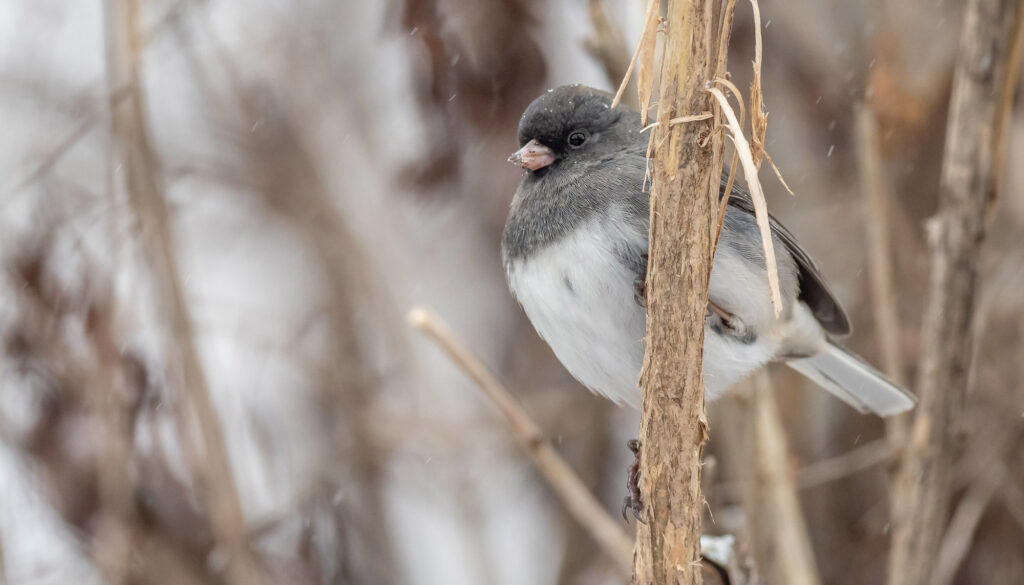The Dark-Eyed Junco Bird, Fun Facts, Habitat, Fly, Migration, Sound, Feeder

The Dark-eyed Junco (Junco hyemalis) is a small, grayish-brown bird that is a common sight in North America. It is also known as the “snowbird” because it is often seen flitting about in the snow during the winter months.
To begin with, the Junco is a member of the sparrow family and is closely related to other junco species found in Mexico and Central America. The Dark-eyed Junco is the most widespread and familiar junco in North America, and it can be found in a wide range of habitats, including coniferous and deciduous forests, as well as grasslands and suburban gardens.
COLORS
The Junco’s grayish-brown plumage is streaked with black on the back and wings, and it has a white belly. The male and female are similar in appearance, with the male being slightly larger and having a darker head. The most distinctive feature of the Junco is its dark eyes, which give the bird its name.
REPRODUCTION
During the summer months, Dark-eyed Juncos breed in the mountains and coniferous forests of Canada and the western United States. They typically form monogamous pairs and build their nests on the ground, hidden among rocks or in dense vegetation. The female Junco lays 4-6 eggs and incubates them for about two weeks. Both parents help to feed and care for the young birds.
MIGRATION
In the fall, many Dark-eyed Juncos migrate south to spend the winter in warmer climates. They can be found as far south as Mexico, but most winter in the southeastern and central United States. During the winter, they often form large flocks and can be found in open woodlands, fields, and residential areas, where they are attracted to bird feeders.
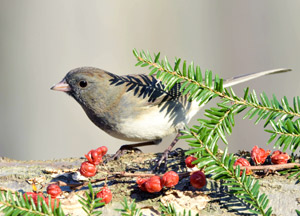
DIET
The diet of the Dark-eyed Junco consists mainly of seeds and insects. In the summer, they forage for insects on the ground and in the vegetation, while in the winter, they rely more on seeds, such as those found in bird feeders.
The Dark-eyed Junco is a common and widespread bird that is well-adapted to a wide range of habitats. Its distinctive dark eyes and grayish-brown plumage make it easy to identify, and it is often seen flitting about in flocks during the winter months. The junco’s adaptability and resilience make it a valuable species for conservation and also a great species for birdwatchers to observe.
ECOLOGIC
In addition to its ecological importance, the Dark-eyed Junco also holds significant cultural significance for many people. Its migratory patterns have long been observed by Indigenous peoples in North America, who have developed intricate knowledge systems based on the movements of different bird species.
CULTURAL
The Dark-eyed Junco is also a popular subject in art, literature, and music. The bird’s beautiful plumage and simple, yet elegant song has inspired countless works of art, including paintings, photographs, and sculptures. The junco’s appearance in literature and music also its versatility as a symbol of different themes and subjects.
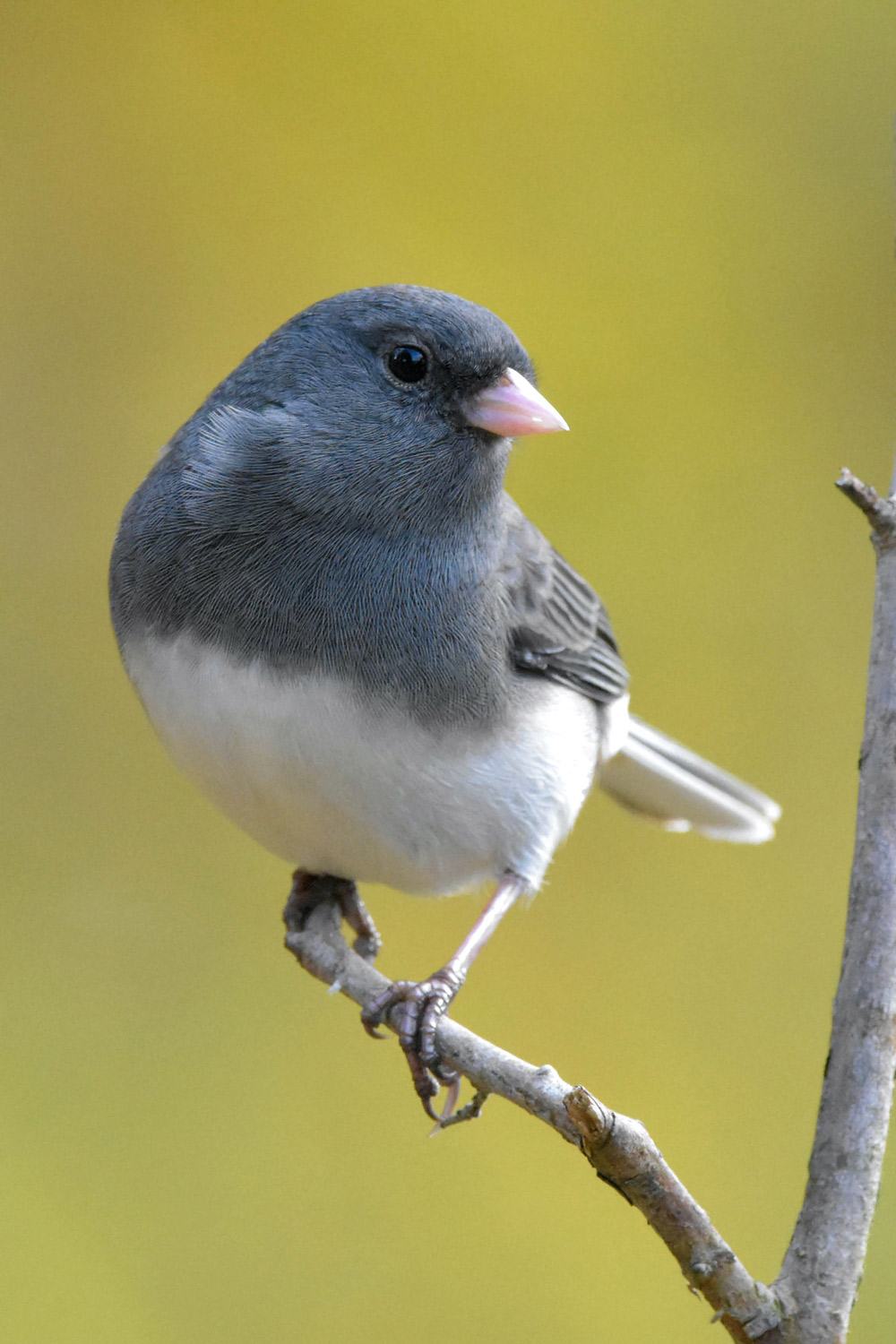
HUMAN IMPACT
Despite its widespread distribution and abundance, the Dark-eyed Junco is not immune to the effects of human activities. Habitat loss and degradation, as well as climate change, can have a significant impact on bird populations.
It is important for conservation efforts to be in place to ensure the protection and preservation of habitats essential for the survival of the junco and other wildlife species.
SCIENTIFIC RESEARCH
It is also worth noting that the Dark-eyed Junco is an important subject of scientific research. Studies on this species have provided valuable insights into a wide range of topics, including avian ecology, evolution, and behavior.
For example, studies have shown that the Dark-eyed Junco has a remarkable ability to adapt to different environments and has evolved into several distinct subspecies, each with its own unique characteristics and adaptations. Research on their migration patterns and habitat use has helped to provide insight into the bird’s response to environmental changes such as climate change and land use changes, which is of paramount importance for conservation purposes.
BEHAVIOR
In terms of behavior, studies on the Dark-eyed Junco have shown that they exhibit a wide range of complex behaviors, including sophisticated courtship rituals, cooperative breeding, and problem-solving abilities. These behaviors make them such an interesting and fascinating subject of study for ornithologists and researchers.
Furthermore, the Dark-eyed Junco is a great species for citizen science, as well as educational and outreach activities. The ability to observe and study the Dark-eyed Junco in different habitats, during different seasons, and across different regions is an excellent opportunity for people of all ages and backgrounds to learn about the natural world and the importance of conservation.
Monitoring and studying the junco populations can help us understand the health of the ecosystem and identify potential issues that may require conservation action.

VITAL ROLE IN ECOSYSTEM
In fact, the Dark-eyed Junco is a fascinating and important species that play a vital role in many ecosystems. Its adaptability and resilience make it an important species for conservation, while its beauty and elegant song make it a favorite among birdwatchers and nature enthusiasts.
Studies on the species have provided a wealth of information that has helped to better understand avian ecology, evolution, and behavior. The species is an important subject of scientific research, citizen science, and educational and outreach activities as well. Our understanding of the species can help us to make informed conservation decisions to ensure that the Dark-eyed Junco and its habitats continue to thrive for generations to come.
CONSERVATION
It’s important to note that the conservation of the Dark-eyed Junco, like any other species, is a complex issue that requires a multidisciplinary approach. It’s crucial to understand the impact of different human activities such as urbanization, habitat fragmentation, and climate change, as well as their interactions, on the bird populations. This includes looking at specific threats such as pesticide use, predation, and disease transmission.
Additionally, conservation efforts need to consider the specific needs of different subspecies and populations of the Dark-eyed Junco, as well as the unique challenges they face. For example, some subspecies, such as the eastern subspecies, may be more vulnerable to habitat loss and degradation, while others, such as the Gray-headed subspecies, may be more at risk from predation.

HOW TO PROTECT THE DARK-EYED JUNCO?
One of the most effective ways to protect the Dark-eyed Junco and its habitats is through conservation partnerships and collaborations. These can include partnerships between scientists, conservation organizations, governments, and local communities. Collaborations between these groups can facilitate the exchange of knowledge and expertise, as well as increase resources and support for conservation efforts.
Moreover, citizen science projects, outreach, and education programs have an important role to play in conservation. Citizen science allows for the collection of large amounts of data that can be used to track population trends and monitor the impacts of conservation efforts.
Outreach and education programs are essential tools to increase awareness of conservation issues and promote responsible behavior towards wildlife and the natural environment.
MULTIDISCIPLINARY APPROACH
The conservation of the Dark-eyed Junco requires a comprehensive and multidisciplinary approach that considers the complex interactions between different human activities, population subspecies, and specific threats. The collaboration between different stakeholders, citizen science, and outreach and education programs are crucial to ensure the survival and preservation of this beautiful and important species for future generations to enjoy.
Another important aspect to consider in the conservation of the Dark-eyed Junco is the management of the habitats they use. This includes the protection and preservation of important breeding and wintering habitats, as well as the creation of corridors to facilitate migration.
PROTECTION OF FOREST
For breeding habitats, this means protecting and managing high-elevation coniferous forests and alpine meadows, which are critical for many subspecies of the Dark-eyed Junco.
In these habitats, management activities such as controlled burns, thinning of dense stands of trees, and the removal of invasive species can help to maintain the structural complexity and diversity of the forest, making them more suitable for the junco and other wildlife.
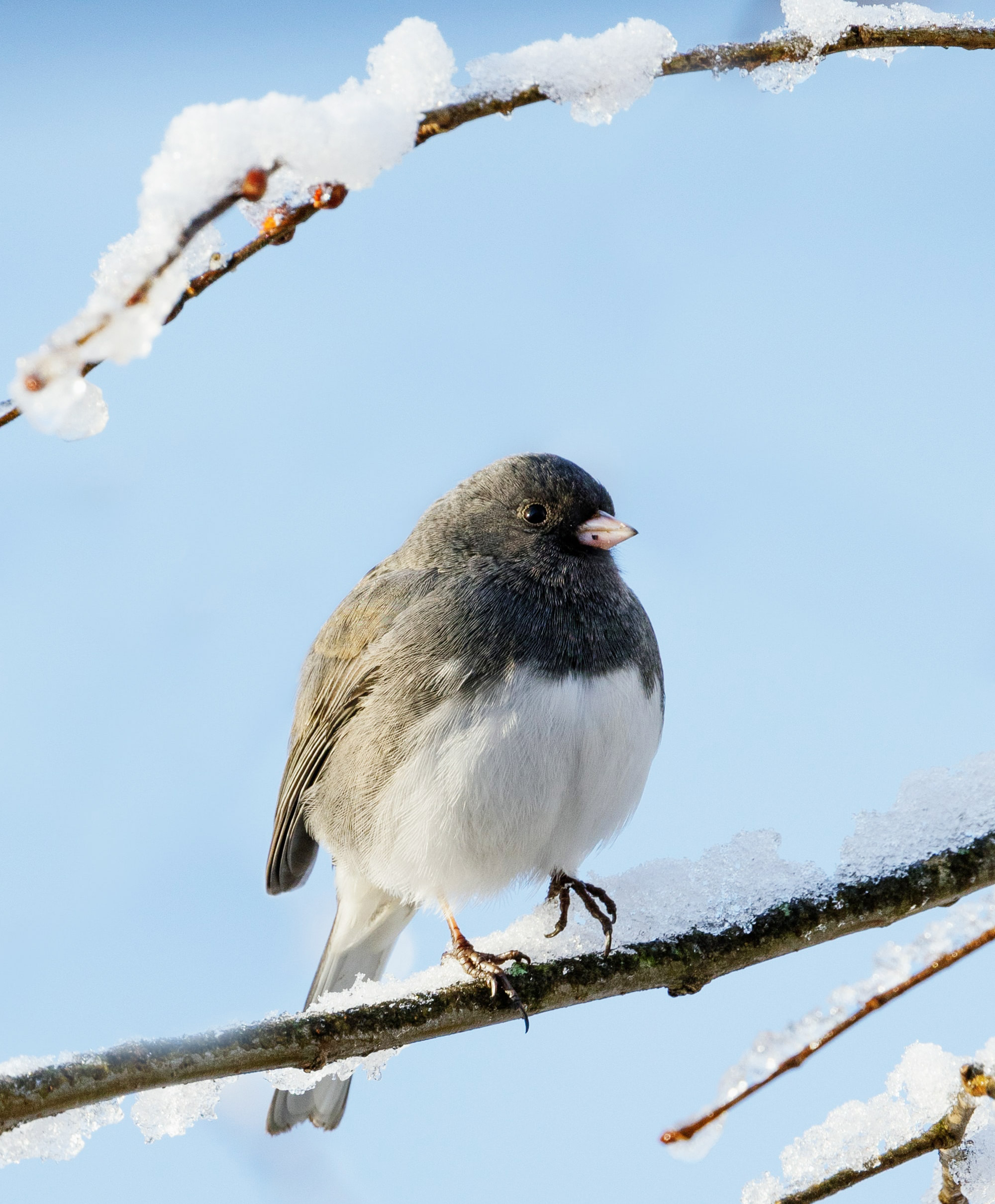
WINTER HABITAT
For wintering habitats, this means protecting and managing a wide range of habitats including woodlands, grasslands, and residential areas, as well as providing food sources such as bird feeders. This can also include efforts to reduce or eliminate threats such as predation and disease transmission.
In addition, the creation and management of corridors that connect important breeding and wintering habitats is also important to enable the Dark-eyed Junco to move safely and efficiently during migration. This can include the protection and management of key migration stopover sites, such as wetlands and riparian areas, as well as efforts to reduce or eliminate threats such as habitat fragmentation and wind turbines.
MIGRATION ASSISTANCE
Furthermore, the use of assisted migration and translocation is also being explored as a possible conservation strategy for the Dark-eyed Junco. This can include the relocation of individuals or populations to more suitable habitats that are not currently occupied by the species, to establish new populations or to provide insurance against the loss of existing populations.
In conclusion, the conservation of the Dark-eyed Junco requires the protection and management of a wide range of habitats, from breeding and wintering sites to migration stopovers. This involves working with partners and stakeholders to implement conservation strategies such as habitat restoration, corridor creation, food provision, disease management and assisted migration. All these efforts will help to ensure the survival and persistence of the Dark-eyed Junco for future generations to appreciate.
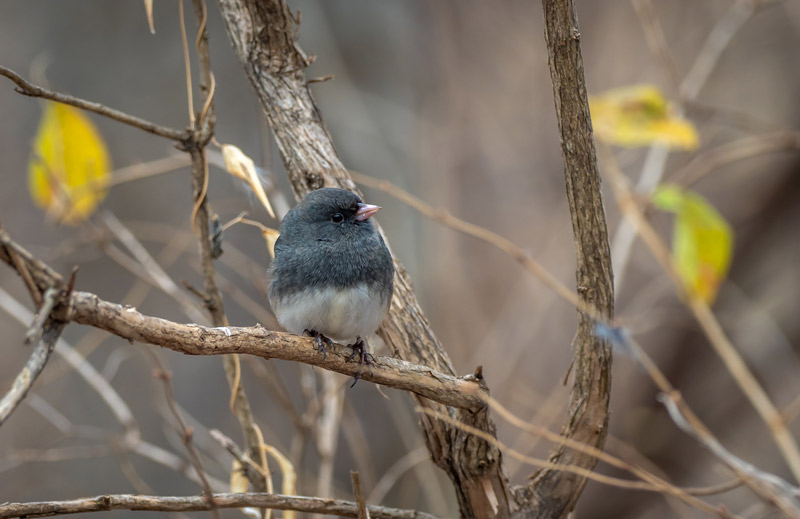
WANT TO LEARN MORE? TAKE A LOOK AT THESE ARTICLES:
- The Scarlet Macaw
- The Scarlet Ibis
- Lovebirds
- The Female Cardinal
- The Great Egret
- The Great Blue Heron
- The American Robin
- The Northern Cardinal
- The Dark-Eyed Junco
- The Blue Jay
- The Gray Catbird
- The Tufted Titmouse
- The Red-winged Blackbird
- The Black-capped Chickadee
- The Evening Grosbeak
- The Common Starling
- The Kiwi Bird
- Wild Birds Unlimited

